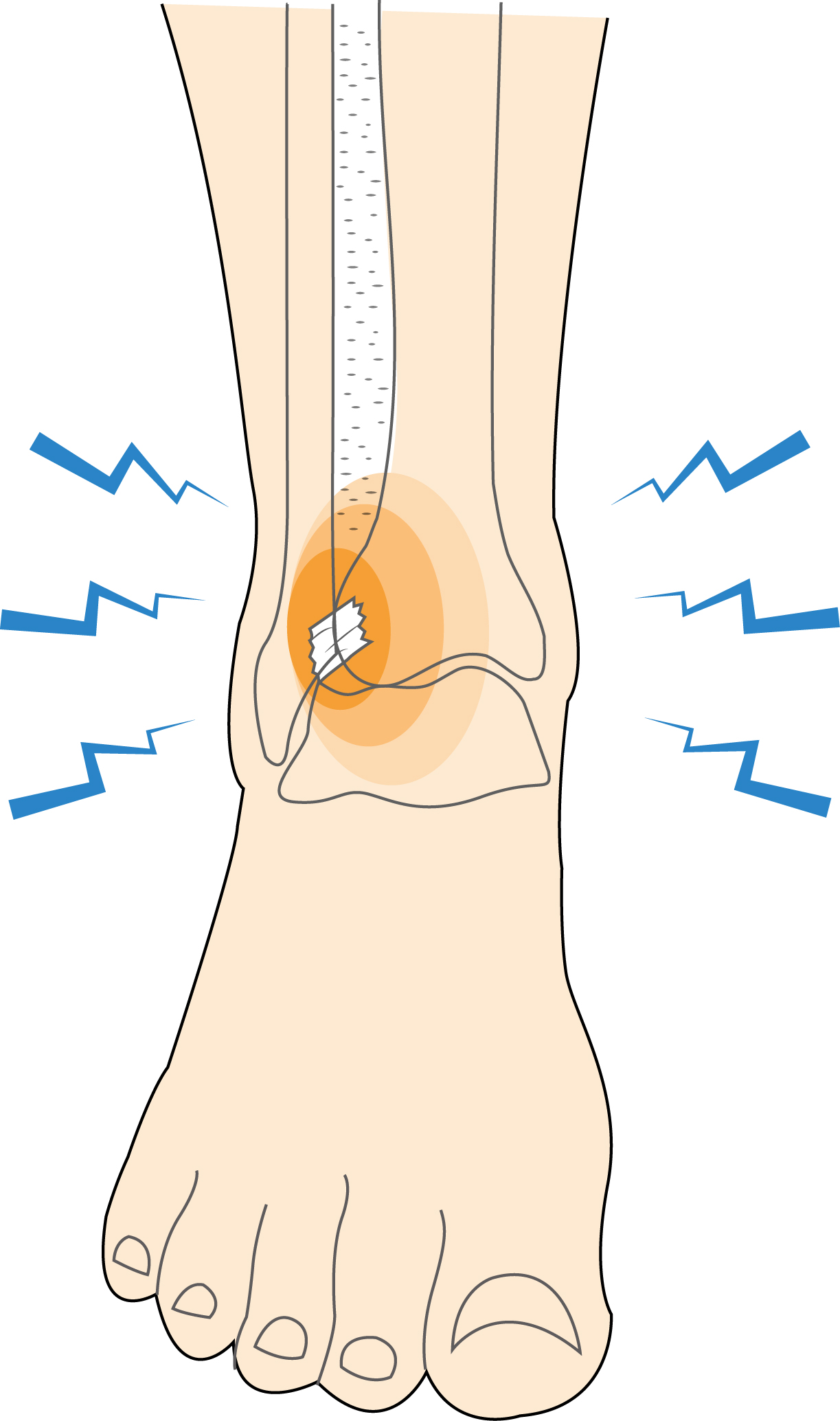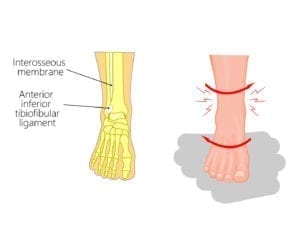A syndesmotic ankle sprain, also called a “high ankle sprain,” is a tearing of ligaments that are above the ankle. These ligaments, tough bands of fibrous tissue, connect the tibia and fibula, the two shin bones that make up the lower leg. This injury occurs less frequently than other types of ankle strains but can require a longer recovery time.



